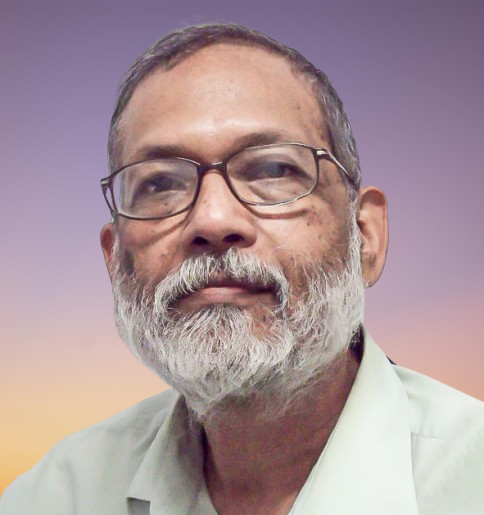Column

People, mostly Hindus, fleeing from East Pakistan to take shelter in India during Bangladesh Liberation War 1971 (Internet)
As a chronicler of 1971 history, I am struck by the lessons we never wish to learn from it. 1971 history is full of every example we can hope to find in human life. The worst and the best always live together in history. As the iconic novel of Charles Dickens on the French Revolution, A tale of Two cities begins: "It was the best of times, it was the worst of times." This applies to 1971 history too. Heroes were there just as were villains. Who are we?
The good ones
Jamila Begum lived near the border area of Khulna where the family had large landholdings. They were well off and had no food shortage. Living in a border area village, many people sought refuge in her home on the way to escape to India. Jamila Begum says, "We fed everyone. We cooked the whole day and kept the fire going. Who knew who would come to seek shelter and when. We kept our home open, not one was turned away. We would keep small packs of food ready so that when they left for India they could carry some food with then."
People suffered for doing so but they didn't give up till they could do no more.
One of the most striking aspects of 1971 was the shelter given to the most oppressed community of 1971, the Hindus. Contrary to some political literature particularly those influenced by Kolkata narratives, Bangladeshi villagers are not anti-Hindu. However, at some point, when sheltering Hindus in areas where Pak army presence was common and anti-Bangladesh politics was high because it was lucrative be so, things began to change. No one was refused but shelter giving was short-time for saving oneself.
The bad ones
But these are the positive narratives of 1971, those that bring out the best. Most are of this kind but as we dive deep, we find the other narratives, of horror, betrayal and greed. It was also a time when lives didn't matter and if resources could be stolen, they were by this tribe. It's interesting that almost all the villains were socially and politically powerful.
Three groups of people were seen doing this kind of work which can be branded as of the "worst' variety.
The first were the professional "bandits' who were doing this before 1971 but saw great opportunities in the chaos and anarchy of that year. They were very even handed in their approach to wealth making and looted everyone without any political, social or religion identity. Very interestingly, some of them even fought the war against the Pakistan army when things got tough for them. But in general they looted at will, and treated it as professional work. The lower class criminals of our society who usually become targets of crossfire killings were probably their ancestors, choosing crime as a livelihood.
It's the second category of criminals of 1971 that have had a larger and longer history that remains alive more strongly than ever before.
Politics of rural criminals
These rural criminals were located in the village power structure and generally were part of the collaborator framework that emerged after April when the forces of Bangladesh retreated beyond India. Pakistan turned to their older allies, the Muslim League which meant basically the rural upper class to develop the civilian structure that would represent the military state in the rural areas. Hence the birth of Peace Committee, hence the rise of the Razakars and hence the repression and the rest that we see in 1971.
The power to oppress is always political and what happens at the grassroots is really a reflection of what happens at the top. We often express shock and dismay seeing the difference between the dream of 1971 and the reality of 2018. We ask, what happened ? But we are probably asking the wrong question.
Perhaps nothing really went wrong and that is the point. There is a continuity of the two trends that we fail to recognize or are in denial about. The looting, arson, property grabbing trend has continued and even if players have changed the trend has not. If we feel that justice was absent in 1971 and is missing now, we should understand that the framework has remained the same.
The good ones are there too but as it was in 1971, they are powerless. Just as they did good till they could do no more, they do whatever they can within their limits. The bad ones are here for all to see.
It's interesting that after the war, thousands of razakars were killed by villagers, FFs and others but the leaders and sponsors, the socially powerfully managed to escape. See if it makes sense in today's circumstances.
History has a habit of going on without breaks.

























Leave a Comment
Recent Posts
Right On Schedule
The most eagerly anticipated, and frankly hyped up, announcement of an ...
Fighting raged along the borde ...
Fighting raged along the border of Cambodia and Thailand, with explosi ...
ICIMOD drives regional cooperation to inspire new mo ..
The Cage of Captivity and the Cry for Freedom: A Cru ..
Why Japan issued an advisory for a possible megaquak ..
The Autocrats’ War on Universities